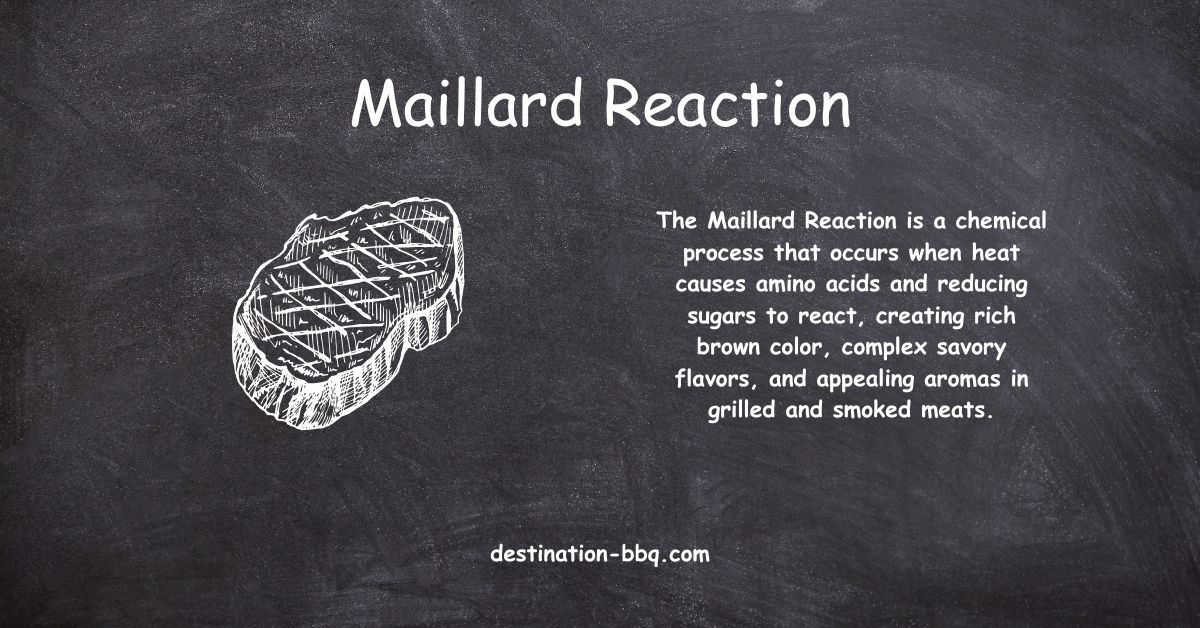The Maillard reaction is a nonenzymatic browning process in which reducing sugars react with free amino groups of amino acids, peptides, or proteins to generate color, aroma, and flavor compounds in heated foods, a phenomenon widely observed in the crust of Bread, roasted Coffee, seared meats, and kilned malts used in Beer. According to Britannica, the reaction was named for French chemist Louis-Camille Maillard, who reported the phenomenon in 1912. (
britannica.com)
History and scope
Systematic organization of the reaction’s chemistry was provided by J. E. Hodge, whose 1953 review framed modern understanding of the sequence from initial sugar–amine condensation through intermediate rearrangements to brown nitrogenous polymers. Hodge’s scheme remains a foundational reference in food chemistry. Journal of Agricultural and Food Chemistry. (
pubs.acs.org)
Chemical mechanism
The reaction begins with nucleophilic addition of an amino group to the carbonyl of a reducing sugar, forming a reversible Schiff base (N‑glycosylamine), which rearranges to a more stable 1‑amino‑1‑deoxy‑2‑ketose (Amadori product) for aldoses, or to a 2‑amino‑2‑deoxyaldose (Heyns product) for ketoses. Subsequent dehydrations, fragmentations, and oxidations produce reactive α‑dicarbonyls (e.g., glyoxal, methylglyoxal), heterocyclic aroma compounds (pyrazines, furans, thiophenes), and ultimately high‑molecular‑weight melanoidins. Reviews and recent studies detail these pathways and intermediates, including the central role of Amadori products. Trends in Food Science & Technology;
Molecules;
Journal of Agricultural and Food Chemistry;
Britannica. (
sciencedirect.com)
Key intermediates
- –Amadori rearrangement products arise from aldose–amine condensations; their chemistry, synthesis, and degradation kinetics are extensively characterized.
Critical Reviews in Food Science & Nutrition;
PubMed review. (
pubmed.ncbi.nlm.nih.gov)
- –Heyns products form analogously from ketose precursors. General mechanistic treatments place them alongside Amadori products as parallel entries to downstream pathways.
Molecules. (
mdpi.com)
- –Strecker degradation occurs when reactive carbonyls convert amino acids to aldehydes (with CO₂ and an α‑aminoketone), contributing to roasted and nutty notes.
Journal of Agricultural and Food Chemistry;
PubMed. (
pubs.acs.org)
- –Melanoidins are nitrogen‑containing, brown polymers that dominate color at advanced stages; they are abundant in coffee and baked goods.
Food Chemistry review. (
sciencedirect.com)
Reaction conditions and kinetics
The reaction rate increases with temperature and is strongly influenced by pH, moisture, and reactant identity. In culinary contexts, rapid browning commonly appears when surface temperatures exceed roughly 140–165 °C; boiling or steaming (≈100 °C) seldom produces comparable browning or acrylamide. Regulatory and encyclopedic sources distinguish the Maillard reaction from Caramelization, which is pyrolytic sugar degradation occurring typically at higher temperatures. FDA;
Britannica. (
fda.gov)
Water activity (a_w) shows a characteristic maximum for Maillard rates at intermediate values (approximately 0.6–0.7), reflecting a balance between molecular mobility and dilution; pH elevation generally accelerates early steps by increasing amine nucleophilicity. Classical and contemporary studies document these dependencies in model systems and foods. Journal of Food Quality;
PMC review;
PMC—flour products review. (
onlinelibrary.wiley.com)
Reactant structure is critical: pentoses (e.g., ribose) are typically more reactive than hexoses; specific amino acids, especially asparagine, have special significance due to downstream formation of Acrylamide. Model‑system work and kinetic modeling underpin these generalizations. Trends in Food Science & Technology;
Wiley—Food & Energy Security. (
sciencedirect.com)
Sensory and technological significance
Volatile heterocycles generated by Maillard chemistry—such as pyrazines, pyrroles, furans, thiazoles, and thiophenes—provide roasted, toasted, meaty, and nutty notes characteristic of browned foods. Recent analytical work demonstrates specific pyrazinones arising from peptide‑Amadori systems and α‑dicarbonyl reactions, expanding known contributors to fluorescence and flavor. Journal of Agricultural and Food Chemistry;
Molecules. (
pubs.acs.org)
In practice, controlling surface dryness, temperature, and pH governs browning intensity: drying or high‑heat surface treatments enhance crust formation, while acidic marinades can moderate rates and alter flavor profiles. Culinary and processing references emphasize that the Maillard reaction, not Caramelization, dominates the browning of bread crust, roasted coffee, and seared meats. Britannica. (
britannica.com)
Comparison with other browning pathways
Nonenzymatic browning encompasses both the Maillard reaction and Caramelization, the latter being thermal decomposition of sugars without amino reactants; enzymatic browning is catalyzed by Polyphenol oxidase acting on phenolics. Reference sources distinguish these routes by substrates and mechanisms, despite superficially similar colors. Britannica;
Caramelization (overview). (
britannica.com)
Health, nutrition, and toxicology
Maillard chemistry in foods can diminish nutritional quality by blocking essential amino acids (notably lysine) and forming advanced products; analytical markers such as furosine (from lactulosyl‑lysine) and 5‑hydroxymethylfurfural (HMF) track processing severity in dairy and baked goods. Journal of Dairy Science;
Journal of Agricultural and Food Chemistry. (
journalofdairyscience.org)
During high‑temperature, low‑moisture cooking (frying, roasting, baking), asparagine reacting with reducing sugars can generate Acrylamide, a process‑contaminant of toxicological concern. Risk assessments note greatest contributions from potato‑based products, cereal‑based products, and coffee; boiling and steaming generally do not promote formation. EFSA Journal;
FDA. (
efsa.europa.eu)
In vivo, analogous glycation reactions proceed at physiological temperatures over longer timescales, producing early Amadori adducts and downstream Advanced glycation end-products, which accumulate in long‑lived proteins and increase in diabetes. Proceedings of the National Academy of Sciences/Annals review via PubMed. (
pubmed.ncbi.nlm.nih.gov)
Dietary exposure to Maillard products extends beyond acrylamide to melanoidins and protein‑bound AGEs. Reviews report that melanoidins are abundant in coffee and bread crusts and may be metabolized by the gut microbiota, while evidence on dietary AGE reduction suggests benefits from gentler cooking methods. Food Chemistry;
Nutrients;
Nutrition Research Reviews. (
sciencedirect.com)
Measurement and indicators
Food scientists quantify Maillard progress using markers such as furosine (early Amadori indicator), fluorescent AGEs, HMF, and colorimetric indices; dairy and bakery studies correlate these markers with processing time–temperature load. Journal of Dairy Science;
Journal of Dairy Science;
Journal of Agricultural and Food Chemistry. (
journalofdairyscience.org)
Control and mitigation in processing
Industrial and culinary strategies adjust water activity, pH, temperature, and reactant pools to manage color and flavor while limiting undesired products. Documented measures to reduce acrylamide include lowering reducing sugars/asparagine in raw materials, enzymatic treatment with asparaginase, and moderating time–temperature profiles without compromising safety or quality. EFSA Journal;
International Journal of Food Science. (
efsa.europa.eu)
